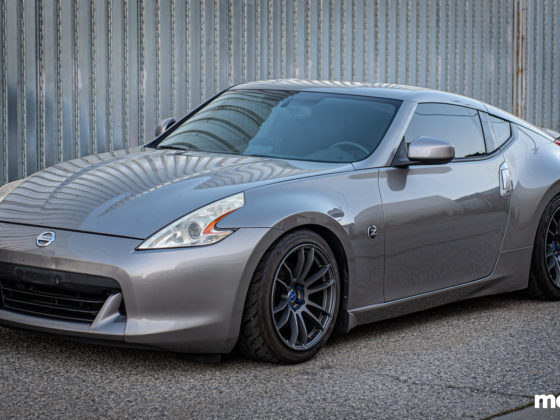It’s easy to overdo a clutch. We’ve probably all been there – your clutch is slipping, maybe you did a few too many launches, or maybe you’re pegging your boost gauge wondering while your 120k-mile-old stock clutch can’t handle it. It’s easy to approach a clutch upgrade with the attitude of “I never want to worry about it again” going straight to the triple-disc stage 27.5+ race model with special friction material only found on the moons of Jupiter. But, alas, we live in the real world, and that world has both stop-and-go traffic AND race tracksWhat do you do if you want a clutch that can handle both? Well, McLeod has attempted to answer that very question with their Tuner Series Mag Force SE Twin Disc.

Compared to a single disc, multi-disc clutches have the advantage of increasing friction surface area while retaining a smaller diameter, which reduces Moment of Inertia and clutch pedal effort. In addition, McLeod use a lightweight single-mass aluminium flywheel to further reduce inertia and improve engine response.
 The Mag Force SE also uses MIBA-lined ceramic friction material on the clutch discs, a material that is designed to provide a perfect blend of street ability, friction coefficient, and long life. This material combined with the twin disc setup allows this clutch kit to hold up to 750HP, while retaining a light pedal effort!
The Mag Force SE also uses MIBA-lined ceramic friction material on the clutch discs, a material that is designed to provide a perfect blend of street ability, friction coefficient, and long life. This material combined with the twin disc setup allows this clutch kit to hold up to 750HP, while retaining a light pedal effort!

The E46 M3 uses a Getrag 420g 6-speed transmission and a dual-mass flywheel (DMF) from the factory. The 420g is known to be a bit agricultural in both feel and noise, but the use of a DMF all but eliminates gear rattle at idle and low RPM that would otherwise plague this transmission. It is widely known and accepted that going away from the factory dual-mass unit will increase gear rattle in certain situations. The McLeod clutch, like all aftermarket clutch/flywheel assemblies for these cars, uses a more conventional, and more reliable, single-mass flywheel.

Single-mass flywheels are much lighter and simpler, with direct actuation, as they lack the sloppy “rubber-band” mechanism found in DMFs which is responsible for absorbing engine harmonics that cause the infamous gear rattle. A more direct engagement and lower mass/MOI is of course advantageous for performance use as it gives the driver more direct control of engine RPM, particularly between gearshifts. The lower inertia also reduces the effect the flywheel has on the rest of the drivetrain. For instance, if you’re downshifting while braking into a corner and don’t get your heel-toe throttle blip just right, the intertia from a heavy flywheel transferring to the drive wheels can upset the chassis, causing you to miss your turn-in point, or worse, causing a spin.

As someone who uses their E46 M3 for just about everything you can do with a car, I wanted a clutch that could handle the abuse but still be easy to live with on a drive to work, and cope with stop-and-go traffic. I typically do 10-12 track days a year, the occasional amateur “drift” day, thousands of miles of canyons, and participate in the odd “Race Car Fridays” by driving it to work and sitting in LA traffic.
As we probably all know, it only takes one part to ruin a perfectly streetable car. Can the McLeod Mag Force SE Twin Disc deliver everything I want in a clutch for my M3 without losing its street-worthy charm?




3 comments
Funny you prefer a higher clutch engagement point. I hated how high I had to bend my knees to shift.
I swapped my non-M clutch pedal for a Mason Engineering one with a much lower engagement point.
Maybe it’s a long leg vs short leg thing?
What did you run for fluid in the trans?
I’m swapping to a single mass flywheel in my E60 and am going to run this
http://uucmotorwerks.com/html_techtip/techtips/tranny_rattle.htm
GL
I stuck with OEM Pentosin. I tried another brand of fluid that met specifications for the trans but had really rough cold shifts which got only marginally better when it warmed up. I was actually worried the trans was going out until I gave the Pentosin stuff a try. Might be something specific with the 420G, though..